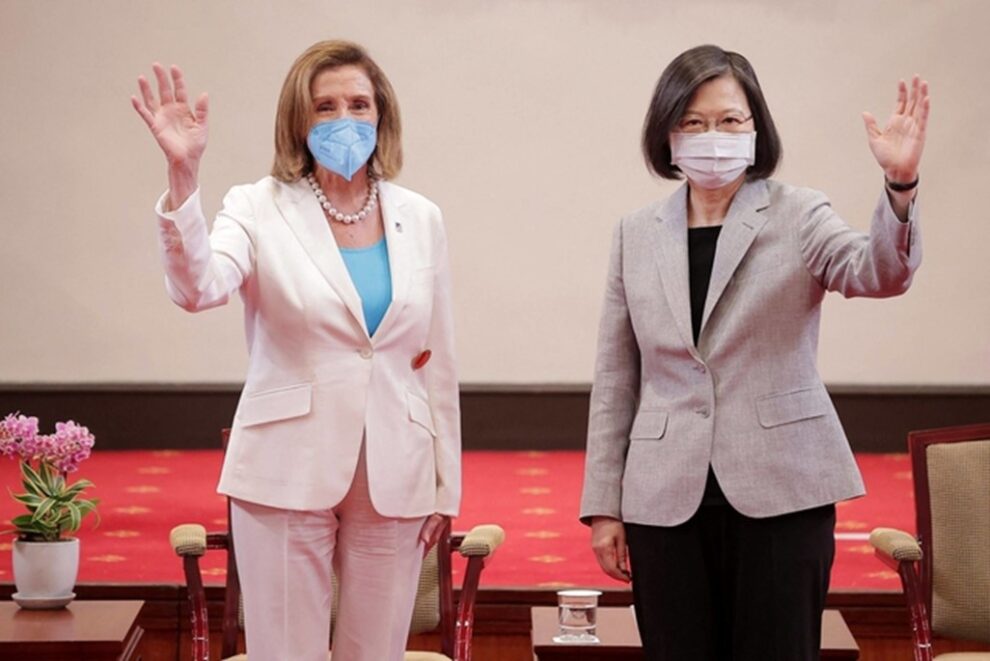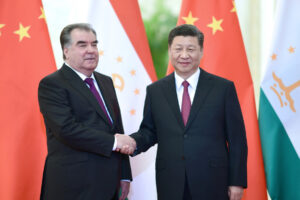US Secretary of State Anthony Blinken’s visit to China is the first sign of a thaw in relations between the two superpowers after years of cooling.
US Secretary of State Anthony Blinken visited China for two days from 18-19 June 2023. This visit has attracted special attention from international public opinion. This is the first visit by a US secretary of state to China in five years and also the first visit by a senior official in the administration of President Joe Biden to Beijing since January 2021.
Mr. A. Blinken’s trip was scheduled for February, but was delayed due to the downing of a Chinese hot air balloon entering US airspace.
The last US secretary of state to visit China in 2018 was Mike Pompeo, an official in the administration of President Donald Trump.
Context of the visit
The US-China relationship has deteriorated rapidly since President D. Trump, with the US promulgating the “National Security Strategy” in 2017, referring to China as a “strategic competitor”. The US then launched a trade war against China, banning US companies from selling equipment to Huawei and others over allegations of Xinjiang issues, restricting visas for students. and Chinese scholars and argue that China is a currency manipulator.
Under President J. Biden, US-China relations have become even worse.
Immediately after being elected, in early March 2021, Mr. Biden published the “Interim National Security Strategy Guidance (INSSG)” to deal with the global challenges of the century. 21, sees China as the only competitor capable of combining economic, diplomatic, military and technological power.
Next, in September 2021, US President Joe Biden, British Prime Minister Boris Johnson and Australian Prime Minister Scott Morrison signed a joint statement establishing a defense and security partnership, essentially a military alliance. The new AUKUS includes Ausralia, Britain and the United States, and strengthens defense ties with US allies in the region such as Japan, South Korea, Australia and the Philippines to contain Chinese influence.
The US increasingly supports the island of Taiwan (China) both politically and militarily. From the time of President Trump until now, despite strong objections from Beijing, the US has stepped up cooperation with this island.
In terms of politics, in 2022, US House of Representatives Speaker Nancy Pelosi made an official visit to the island of Taiwan. Most recently, on April 5, 2023, new Speaker of the House Kevin McCarthy and 17 US lawmakers who are senior US officials met with Taiwanese President Tsai Ing-wen for the first time in the US since. since 1979.
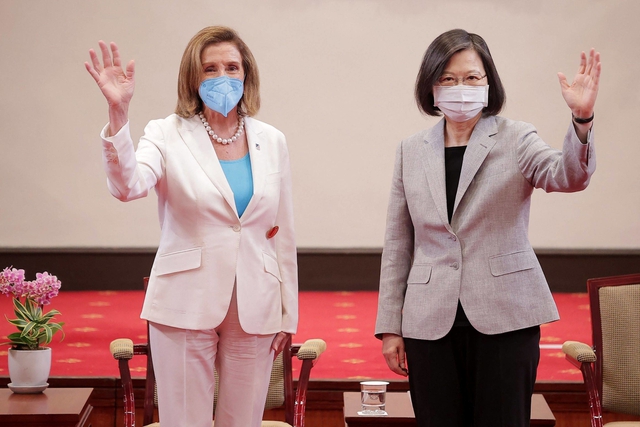
In terms of military, the US decided to sell weapons to Taiwan worth $ 1.1 billion, including modern weapons to enhance the island’s defense capabilities. On a global scale, Washington implements a policy of pivoting to the Asia-Pacific to contain China. Along with establishing relationships with allies, the US has sent many military vehicles to the Pacific region. Frequent encounters take place between US warships participating in freedom of navigation patrols (FONOPs) and Chinese forces, while Beijing believes that the US threatens Chinese security.
Relations between Beijing and Washington have recently seriously deteriorated in the context of the hot air balloon incident and China’s position on the Ukraine issue, military tensions in the Taiwan Strait, as well as in the South China Sea. and East China.
China has conducted military exercises near Taiwan, warning of the use of force to re-annex the island. On the other hand, China has strengthened cooperation with Russia, and at the same time gathered forces to promote the new multipolar world order, instead of the unipolar order led by the US.
It can be said that the relationship between the US and China in recent years has been extremely tense and is at the lowest level since the two countries established diplomatic relations in 1979. The cold war atmosphere has just begun. over the relations of the two countries.
With the US presidential election approaching, President J. Biden wants to take some steps to ease relations with China.
Results of the visit
In the context of a complicated world situation, the US-China confrontation has reached its climax, and after a long period of icy relations, the meeting between the two superpowers at the highest diplomatic level alone is a successful outcome. very positive results.
US President Joe Biden said that relations between the US and China are on the “right track” and do not let the fierce competition between the two countries turn into conflict. He praised Secretary of State A. Blinken for “doing a wonderful job”.
Meanwhile, Chinese President Xi Jinping said that “progress” had been made during the visit and evaluated the meeting with Mr. A. Blinken and the outcome of his visit as “very good”. In particular, after a long period of tense confrontation, the world’s two largest superpowers talked to each other and agreed it was necessary to stabilize the relationship.
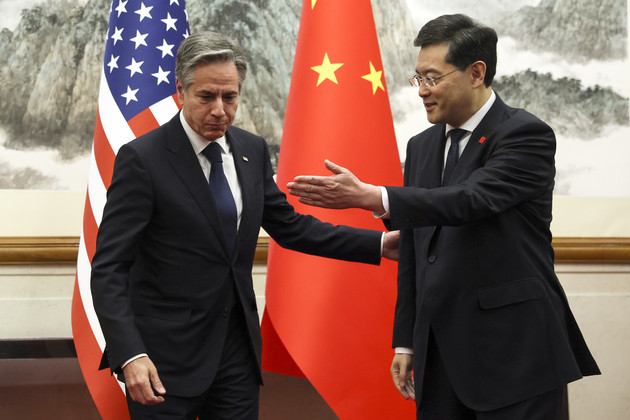
At a press conference at the end of the visit, Mr. A. Blinken said that Washington had achieved the objectives of the visit and that his China trip was a good start, contributing to the stabilization of US relations with China. .
“The two countries should end misunderstandings about the hot air balloon incident,” he said. We said what we had to say and we need to make it clear so this doesn’t happen again and this chapter should be closed.”
Mr. A. Blinken told President Xi Jinping that the US welcomes China’s efforts to play a “constructive” role in bringing peace to Ukraine, based on the principles of the UN Charter, but Washington is concerned that private Chinese companies are helping Russia and wants tighter control from Beijing.
The two sides agreed to continue diplomatic communication with more visits in the future. Many observers expect the visit to pave the way for more meetings at various levels between the two countries in the coming months, including a planned visit to China by Finance Minister Janet Yellen and Commerce Minister Gina Raimondo, as well as the possibility that President J. Biden and President Xi Jinping will meet at the next G-20 Summit this September in New Delhi or at the Economic Cooperation Forum Asia-Pacific (APEC) is scheduled to be held in San Francisco next November.
Hard-to-resolve differences between the two countries
The biggest conflict is over the Taiwan issue. This is a matter of “no room for compromise” and potentially escalation.
Mr. A. Blinken reaffirmed the US “one China” policy unchanged. “The US does not support Taiwan independence, but does not want to change the status quo,” he said.
During meetings in Beijing, A. Blinken expressed US concern about China’s “challenging actions” in the Taiwan Strait and suggested that potential tensions around Taiwan could lead to to a global crisis.
The US relationship under President J. Biden with China got off to a rough start. Biden is unwilling to lift trade restrictions imposed by his predecessor Trump on billions of dollars worth of Chinese exports to the US.
In some areas, J. Biden even increased pressure, limiting the export of US computer chips to China to maintain America’s advantage in the most advanced electronic technology. China responded by banning the import of memory chips from the largest US manufacturer, Micron. The US also restricts the export of artificial intelligence chips to China.
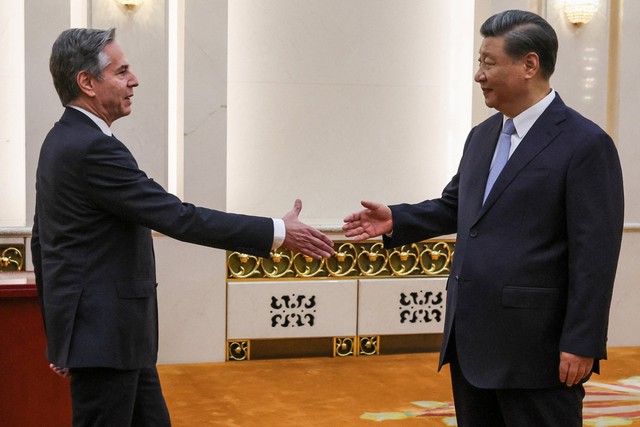
President J. Biden said that the US considers China a competitor but not an enemy. However, achieving a balance here is not easy, as both economic and political competition is increasing. While both the US and China are interested in normalizing and stabilizing the relationship between the two countries, the interests of these two world powers can still lead to conflict.
In economic terms, the Biden administration has emphasized the Chinese government’s support of hundreds of billions of dollars to stimulate the electronic chip manufacturing sector for the US. Meanwhile, they have restricted the export of advanced computer technology to China. Along with the tariffs imposed from the Trump era, China sees these as the first shots in the trade war. In contrast, the US sees this as a response to China’s decades of subsidies for its main industries.
On the military side, China has not yet agreed to resume direct defense communication channels, although this issue was raised several times by Foreign Minister A. Blinken during his visit. Mr. A. Blimken said, connectivity needs to be re-established, especially in light of recent tensions in the Taiwan Strait and South China Sea.
China cut off all communication channels between the two defense ministries last year to protest former House Speaker Nancy Pelosi’s visit to Taiwan, and pointed to US sanctions – especially especially for Defense Minister Ly Thuong Phuc – is an obstacle to this step.
The US has said that its policy towards China is to reduce risks, prevent the possibility of conflict, rather than contain or isolate China. However, the US’s forging alliances with Australia, Japan, South Korea, the Philippines and India is seen by China as an act of deterrence, contrary to Washington’s claims. This is one of the deepest disagreements between the US and China.
In addition to competing for influence on a global level, the list of disagreements and potential points of conflict between the US and China is wide, and it is not easy to resolve overnight.
Following the meeting between President J. Biden and President Xi Jinping on the sidelines of the G-20 summit in Bali last November, the results of US Secretary of State A. Blinken’s visit to China and dialogues. in Beijing partly contributed to the cooling of relations between the two superpowers.
One visit cannot resolve fundamental differences between Washington and Beijing. This is just the beginning of the thaw in relations between the US and China. There will be very difficult negotiations ahead. Bringing the two countries’ relations out of the deadlock requires the two sides to make greater efforts and respect each other’s legitimate interests.
Source : toquoc.vn







